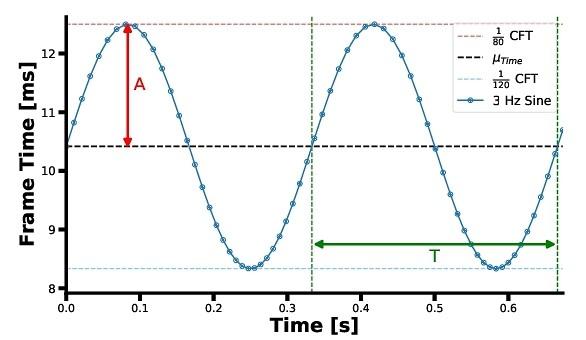On Smoothly Varying Frame Timing in First-Person Gaming

In video games, the time between rendered frames varies significantly and is often uncontrolled. With the advent of variable refresh rate (VRR) displays, like G-SYNC and FreeSync, players can experience varying frame timing as produced instead of aliasing to nearby refresh timings (e.g. VSYNC On). We investigate how the presentation of smoothly varying frame times over time affects a gamer's perception of smoothness and aiming performance. Participants performed a first person targeting task while experiencing sinusoidally varying frame times of different amplitude and mean duration. We found a decrease in perceptual smoothness ratings in the presence of varying frame times.
Publication Date
Published in
External Links
Uploaded Files
Copyright
Copyright by the Association for Computing Machinery, Inc. Permission to make digital or hard copies of part or all of this work for personal or classroom use is granted without fee provided that copies are not made or distributed for profit or commercial advantage and that copies bear this notice and the full citation on the first page. Copyrights for components of this work owned by others than ACM must be honored. Abstracting with credit is permitted. To copy otherwise, to republish, to post on servers, or to redistribute to lists, requires prior specific permission and/or a fee. Request permissions from Publications Dept, ACM Inc., fax +1 (212) 869-0481, or permissions@acm.org. The definitive version of this paper can be found at ACM's Digital Library http://www.acm.org/dl/.
